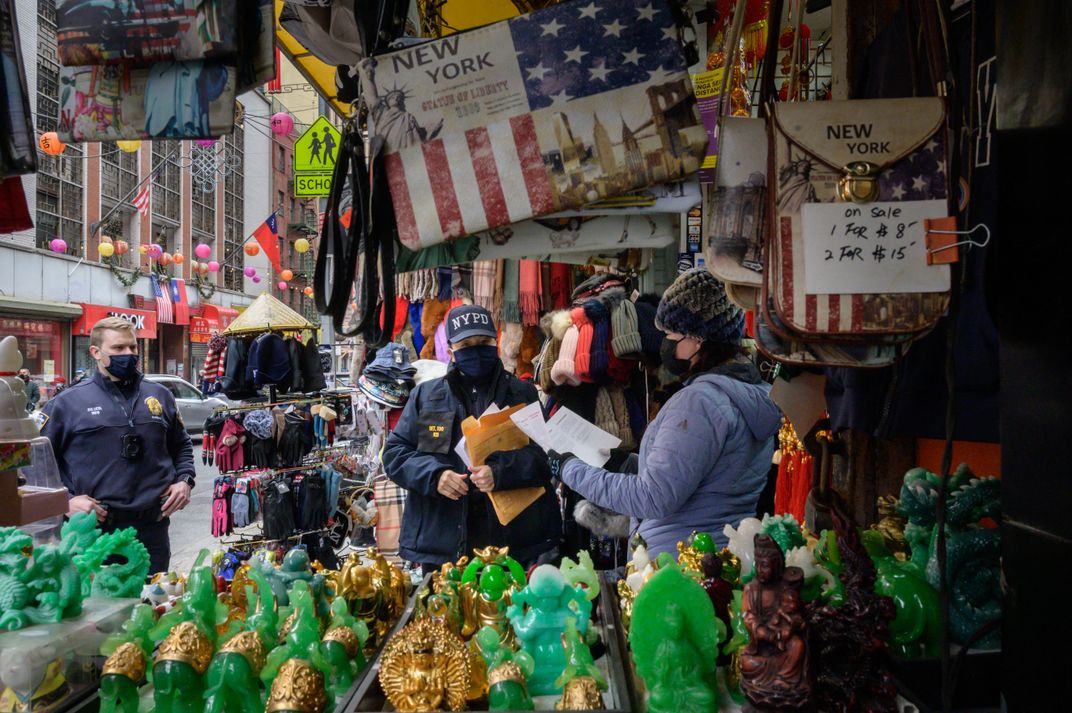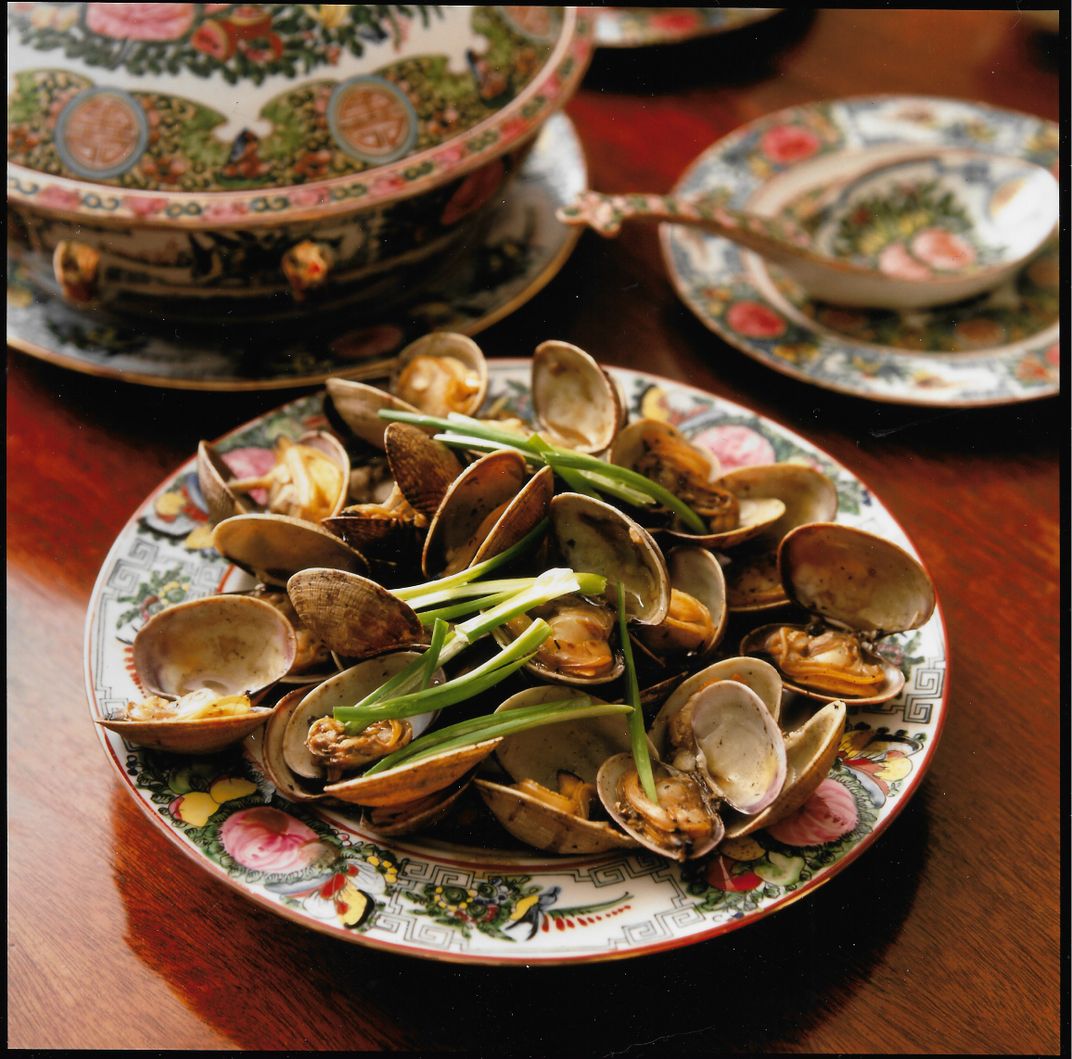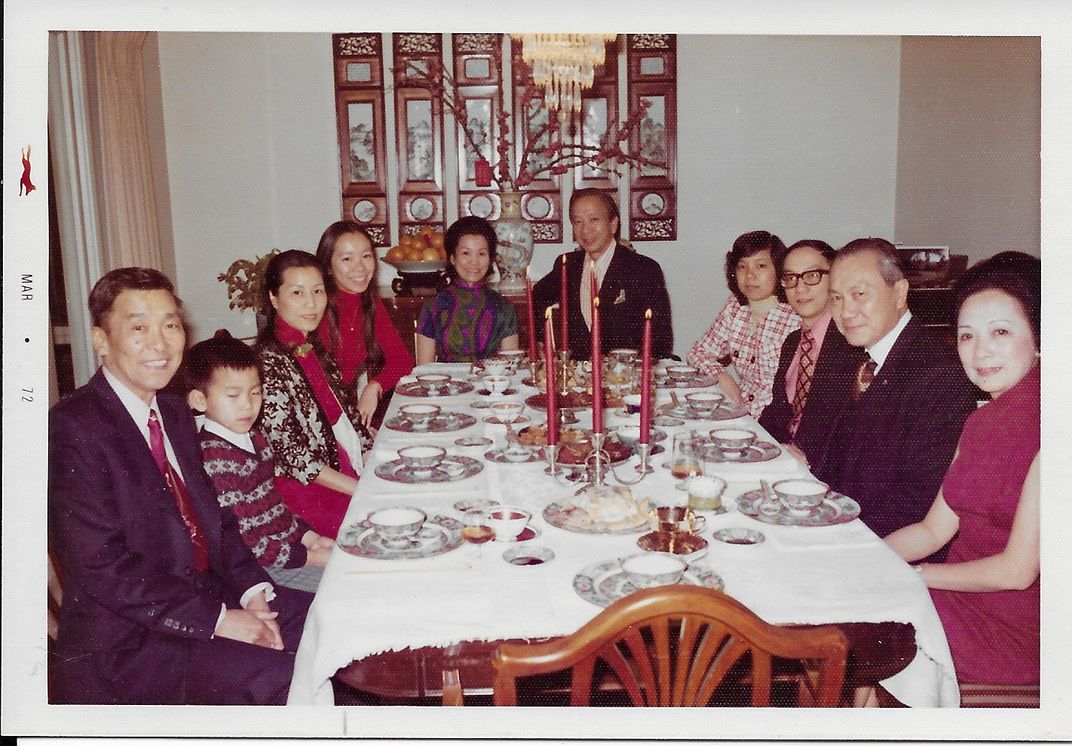Grace Young, Who Documented the Toll of Anti-Asian Hate on NYC’s Chinatown, Receives Julia Child Award
A $50,000 grant is awarded to the culinary historian for her advocacy of Chinese-American culture and cuisine
:focal(1321x440:1322x441)/https://tf-cmsv2-smithsonianmag-media.s3.amazonaws.com/filer/10/18/1018b72d-4664-46ef-a06a-c0f3288357d5/unknown-3.jpeg)
Editor's Note: May 11, 2022: The Julia Child Foundation for Gastronomy and the Culinary Arts announced today the award-winning activist and cookbook author Grace Young is the recipient of the 2022 Julia Child Award. "Over the course of her career, Grace Young has made an immeasurable impact on the culinary landscape," said the organization's chairman Eric Spivey in a statement. "Grace and Julia share an innovative spirit, a passion for education and a commitment to encourage change." Young will receive the award in October at the Smithsonian's National Museum of American History.
Read more about Young's love of cooking, dedication to tradition and her efforts to save New York City's Chinatown restaurateurs at the height of the global pandemic in this story pulled from our archive.
Grace Young has had many roles in the food world—first as a cookbook author and preservationist of classic Cantonese recipes, then as a self-styled “wok therapist” dedicated to exploring the wonders and challenges of this venerable Chinese cooking pot—but she never saw herself as an activist.
For the past year, however, aghast at how businesses in New York’s historic Chinatown were being decimated as a result of the coronavirus pandemic, she has been going full throttle. As the realization of what was unfolding came crashing down, she and videographer Dan Ahn recorded “Coronavirus Stories,” a series of short on-the-spot video interviews with the community’s restaurant and shop owners. The conversations movingly capture the wrenching decisions to close, either permanently or temporarily, that so many business owners had to make. “Chinese restaurants were singled out,” Young says. “The blame was placed on them.”
The proprietors talk to Young with heartbreaking frankness. “I’ve been in a million Chinese restaurant kitchens in my life,” says Young of the day of her interview with Hop Kee owner Peter Lee. “I’ve never been in one that’s quiet. It’s the look on the faces of those employees that has haunted me this whole past year. Everybody was shell-shocked.” In one of the videos, she speaks with Mei Chau, the owner and chef of the now-shuttered Malaysian-French restaurant Aux Epices, about the swift economic downturn that occured after restaurants were ordered to close early last spring during the lockdown. “It's hard, but I think it's time,” she told Young after she made her decision to close permanently.

Not only were jobs and livelihoods lost as New York’s tourist crowds evaporated overnight, but traditions and history disappeared as well. As Young points out, Manhattan’s Chinatown is more than a tourist attraction; it is a living, breathing immigrant neighborhood, packed with mom-and-pop shops that are reminiscent of what small-town America used to be, a way of life that is fading fast.
The damage done by the pandemic is varied and terrible—death, illness, job loss, long-lasting health consequences, educations disrupted, inequities exposed—but before the horrifying shooting in Atlanta on March 16, the increase in anti-Asian hate crimes and violence was perhaps the consequence least acknowledged outside of Asian American communities. Six of the eight victims were women of Asian descent. The statistics show that incidents have been on the rise as the pandemic has progressed: the nonprofit advocacy organization Stop AAPI Hate reports 3,800 instances of anti-Asian violence, discrimination and harassment during the last year, although the actual number could be higher.
While the entire U.S. restaurant industry is reeling because of the pandemic, with one-in-six restaurants closed or on pause as of December 2020, Chinese restaurants across the country and in the historic Chinatowns of San Francisco and New York have also had to cope with virulent anti-Chinese and anti-Asian racism. “Misguided fears that the Chinese were to blame for the virus created an atmosphere that led people to shun Chinese restaurants. This started back in January 2020—before this country reported even one death—and these businesses continue to suffer,” says Young.
What’s more, the business model of the neighborhood’s long-standing restaurants depended on a large volume of foot traffic, on kitchens that turned out, at very low cost, heaping bowls and platters of lo mein and lobster Cantonese to tourists, residents, students, people serving as jurors at the nearby courthouses. This model cannot support the high fees commanded by delivery services, and most owners are so low-tech that they don’t even have an online presence. While Manhattan’s Chinatown has in recent years seen an influx of shiny new bubble-tea shops, these places, in Young’s view, don’t represent the history of Chinatown. And although New York City has thriving Chinatowns in other boroughs (Flushing in Queens and Sunset Park in Brooklyn), they don’t tend to attract the visitors that the original Manhattan Chinatown does.
Young’s passion for the history of time-honored Chinese cooking predates the pandemic. Her three award-winning cookbooks—The Wisdom of the Chinese Kitchen, The Breath of a Wok, Stir-Frying to the Sky’s Edge—each seek to illuminate a different facet of the cuisine, through recollections of her family’s traditions, recipes and photographs, an encyclopedic discussion of the wok, or a meticulous recounting of the stir-frying technique.
But last year, she approached the Smithsonian with an offer to add some of her family’s history to the collections. Young proposed donating her family’s 70-year-old carbon-steel round-bottomed wok—what she calls the “work horse of the Chinese kitchen”—as well as a prized set of Guangcai porcelain dishes that had been her maternal grandparents’ wedding gift to her parents. (She is also member of the Smithsonian’s National Museum of American History’s Kitchen Cabinet, which advises the museum on food history.)

The story of her family’s Canton Rose porcelain is a fascinating blend of old Shanghai and of-the-moment social media. She knew that the treasured pieces, brought out during her childhood just once a year for Lunar New Year celebrations, had been sent from her grandparents in Asia to her newlywed parents in San Francisco in 1949 or 1950.
Her assumption had been that the set had been manufactured in Hong Kong, where her grandmother was then living, but through the miracle of Instagram, Young connected with the company, Yuet Tung China Works, still in existence in Hong Kong, and discovered that the porcelain came from Shanghai, where the company had operated a factory for only a few years, from 1938 to 1941. The traditional floral motifs used in Chinese porcelain include chrysanthemums, peonies and orchids, but the Youngs’ porcelain displays roses, a signature pattern for Guangcai porcelain. The pattern is called “Rose and Long Life” because it integrates symbols of longevity.
Martina Tso, a fourth-generation family member of the factory’s owners, says, “We never dreamed our porcelain would end up in a museum.” Young calls it an “oh-my-god moment from both sides of the ocean.”
Stephen Velasquez, a curator in the museum’s division of cultural and community life, talks about what goes into an acquisition such as Young’s family’s porcelain. The museum will, when the acquisition process is complete, have two place settings, plus serving platters and bowls. “We hold and collect things that revolve around the domestic sphere, around everyday life—and ceramics falls into that.” These items tell a story, Velasquez explains: “For the last couple of years, we’ve been looking at post-World War II immigration, people who have migrated here to the U.S.—how do these traditions hold on and how do they change? What is the impact on the everyday life of the U.S.?”
“Both my parents brought from China the traditions of food and cooking as they had practiced them in their homeland,” Young writes in The Wisdom of the Chinese Kitchen, in which she delves into the traditions of Chinese cooking. During this last pandemic year, Young and the James Beard Foundation have created a #SaveChineseRestaurants campaign to honor those traditions and the restaurants that do so much—deliciously—to keep them alive. She wants Chinese food aficionados to post a picture of their favorite dish from their favorite restaurant and to ask their followers to do the same.
Explore contemporary and historic discrimination and find oral histories and education videos for teachers at the Smithsonian Asian Pacific American Center’s online presentation “Standing Against Xenophobia.” To find out about other efforts to combat anti-Asian racism, see Stop AAPI Hate, Asian Americans Advancing Justice, or Anti-Asian Violence Resources.
"Coronavirus: Chinatown Stories" by Grace Young and videographer Dan Ahn, and produced in collaboration with Poster House is available for online viewing.
/https://tf-cmsv2-smithsonianmag-media.s3.amazonaws.com/accounts/headshot/Smiling-Anne.jpg)


/https://tf-cmsv2-smithsonianmag-media.s3.amazonaws.com/accounts/headshot/Smiling-Anne.jpg)